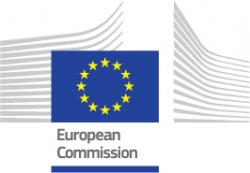Conference Program
Keynote presentations
09:00 - 11:10
The decarbonization opportunity for the mobility sector
Head
McKinsey Center for Future Mobility
Germany
By 2035, the largest automotive markets will go electric. We believe Europe – as a regulations-driven market with positive consumer demand trends – will electrify the fastest and is expected to remain the global leader in electrification in terms of EV market share. In addition to the European Commission target, which requires around 60% EV sales by 2030, several countries have already announced an end to ICE sales by 2030. Electrification will cause a major shift in the entire automotive value chain. In line with EV uptake, the buildup of charging infrastructure needs to accelerate to avoid becoming a potential bottleneck and limiting consumer-driven EV adoption. We estimate the industry needs to install more than 15,000 chargers per week by 2030 within the European Union. Consequently, the grid must be enabled in parallel. EVs are poised to command on average more than 5% of electricity demand in 2030 in Europe. It will be important to reduce charging during peak load periods through ‘managed charging’ by controlling charging time, duration and intensity with vehicle-to-grid (V2G) technology as an enabler.
EU supports the deployment of ITS through CEF
 Pierpaolo Tona
Pierpaolo TonaHead of sector
CINEA - European Commission
In recent years, ITS has played a crucial role in achieving the EU objectives for transport safety and sustainability. ITS services are now widely used across Europe and drive transport efficiency at local and international levels. The CEF (Connecting Europe Facility) program supports trans-European infrastructure and new technologies. It has already provided over €500m of funding for ITS, triggering investments of more than €1.3bn for the deployment of ITS and C-ITS services in Europe.
New technologies will help drive road transportation in the future
 Capucine Tourrenc - Le Tréguilly
Capucine Tourrenc - Le TréguillyHead of innovation
Gefco
France
Road transport is plagued by many challenges: shortage of drivers, zero-emission zones, looming CO2 regulations, etc. We see that things are moving for last-mile and short-distance merchandise transport, but what about long-distance? New technologies and infrastructure to overcome these are yet to be there. We’ll explore in detail the alternative energies, when they’ll be available on a large scale, and how to overcome current challenges for the green transition, as well as the shortage of drivers.
Reality check – where might connected and autonomous and electric vehicles be in the next decade?
 Paul Grayston
Paul GraystonEmerging technology and innovation lead
Jacobs
UK
2017 saw auto manufacturers hyping that they would produce Level 5 cars by 2021. Yet today, despite some of the technology being proven, autonomous vehicles sit right at the bottom of Gartner’s ‘Trough of Disillusionment’. To produce more pragmatic and tangible predictions for CAVs, EVs and associated infrastructure in the next decade, what should we be considering?
Q&A
Charging technologies of the future
11:20 - 12:30
The future of roads and infrastructure – an electricity perspective on electric vehicle charging infrastructure
 Janet Wood
Janet WoodEditor
New Power Report
UK
In fossil fuel days the electricity industry used to think only about the power supply needed to charge electric vehicles. Now electricity operators need storage to manage flexibility and EV batteries look like a key part of the solution. What's behind the change and what are the implications across roadside charging and other infrastructure?
Vehicle technology trends impacting the charging infrastructure ecosystem
 Claudio Vittori
Claudio VittoriSenior research analyst - e-mobility team
IHS Markit
Italy
This presentation will provide the current state of vehicle-side and infrastructure-side charging technology, considering how the key components, their capabilities and prevalence will grow over a ten-year horizon. Related advances in battery technologies will be touched upon, with context given to the myriad recent announcements around charging performance. Potential deviations to the forecast will be considered in the evaluation of technological progress and regulatory evolution, as well as differences in approach by region. A final outlook on the expected deployment of charging infrastructure ecosystem on the main regions will be also provided.
Newly confirmed presentation by Theo Panayi, Arcadis
 Theo Panayi
Theo PanayiAssociate technical director
Arcadis Consulting (UK) Ltd
UK
VOLT - determining the best possible locations for EV charging
 Mark Gorter
Mark GorterSpecialist sustainable mobility
RoyalHaskoning DHV
Netherlands
VOLT is a smart GIS software service that comes with charging infrastructure consultancy services for road authorities and public transport providers. Making forecasts for the amount of (semi) public loading poles needed on neighborhood level, using different data sources such as EV sales forecast, demographic and social data. Based on these forecasts, design of public space and local policy like the aim to spread or concentrate (car sharing) charging and availability of capacity in energy networks, VOLT determines the best possible locations for charging poles. Furthermore, it assists road authorities with the TRO’s-process and is being used to monitor and manage concessions with charging pole operators.
A roadmap for EV charging
Infrastructure strategy lead
Cenex
UK
The UK Government has committed to ending the sale of new petrol and diesel cars and vans by 2030, with hybrids being phased out by 2035. Projections suggest that a massive revolution in transport is on its way, with accelerating EV uptake forecast for the coming years. This has significant implications for the infrastructure needed. Some charging challenges have already been solved but this presentation will discuss the key barriers on the roadmap, which will need to be addressed if the sector is to expand as predicted and deliver the hoped-for air quality and climate change benefits.
Q&A
FABRIC: feasibility analysis and development of on-road charging solutions for future electric vehicles
 Dr Angelos Amditis
Dr Angelos AmditisResearch director - Institute of Communication and Computer Systems
National Technical University of Athens
Greece
FABRIC was a large-scale integrated project co-funded by the EU’s 7th Framework Programme, focusing on advanced road charging solutions for pure-electric vehicles for future transportation systems. It ran from 2014 through 2017 and was implemented by 25 partner organizations from nine European countries. The project directly addressed the technological feasibility, economic viability and socio-environmental sustainability of dynamic on-road charging of electric vehicles, paving the way for large-scale deployment of electromobility. Results and impacts will be discussed during the presentation.
Presentation of the DynaCov project
Sustainable energy and transport consultant
Cenex
UK
 Dr Olivier Haas
Dr Olivier HaasAssociate professor, team lead for intelligent and transportation systems and 5G group leader
Coventry University
UK
Wireless charging demonstrators have been implemented in a number of sites across the world. DynaCoV is investigating the feasibility of deploying Dynamic Wireless Power Transfer technology in the UK to support the decarbonisation of heavy goods vehicles and buses in particular. This presentation covers the traffic modelling and electrical modelling work on a case study site in Coventry which may become the UK’s first demonstrator. It shows how the benefit of Dynamic Wireless Power Transfer technology depends and relates to the location, the traffic, the vehicle mix as well as the market penetration of electric vehicles.
Wireless charging and its role in decarbonizing the global transport sector while lowering costs for fleet operators
 Charlie Levine
Charlie LevineChief marketing officer (CMO)
ElectReon
Israel
ElectReon has been at the forefront of developing dynamic wireless power transfer (DWPT) technology for almost a decade and implementing it on public roads in Germany, Sweden, Israel and now Italy. DWPT offers a great pathway to decarbonizing the transport sector, allowing fleet owners to reduce their upfront costs, enabling vehicle battery reduction, minimizing grid impacts and creating a shared and accessible charging platform for all road users, while simultaneously eliminating range anxiety. Join Charlie Levine, the CMO of ElectReon, as she introduces wireless charging technology and its many applications, and provides a deeper look into several of the company’s public pilot projects in Europe and the Middle East. Charlie will focus on lessons learned, outcomes for the project stakeholders and some of the implications for the wider transport sector.
Moving goods and passengers, not batteries. Dynamic Wireless Roadway Charging; fairytale, or realistic solution within five years?
 Dr Sergio Alejandro Perez Romero
Dr Sergio Alejandro Perez RomeroSales and business development manager
IPT Technology
Germany
Wireless road charging in travel lanes is one part of a universal charging solution. When combined with wireless stationary charging, smart energy management will lower transportation costs, solve the charging hassle, reduce battery size and price, and provide a realistic solution for one of the most challenging electrified transportation long-haul trucking problems. But what is the status and development of this dynamic road charging technology today, and is this even feasible in five years? IPT has almost 25 years of experience and 80,000 meters of wireless dynamic energy transfer tracks for the industrial markets. In addition, five tested and proven concepts of Dynamic Wireless Road Charging with high power energy transfer at different test locations in Germany and Belgium with varying vehicles like trucks, buses, delivery vans, and passenger cars. Dr Sergio Perez takes you on a journey of wireless charging that will accelerate the energy transition. Bring the charge to the vehicle instead of bringing the vehicle to the charge.
Charging technologies of the future
 David Schatz
David SchatzVP of sales and business development
WiTricity Corporation
USA
Wireless charging for electric mobility has the power to accelerate EV adoption, reduce the TCO for fleet owners and make a difference to our planet. This presentation will address how EV wireless charging technology works, and will provide an overview of the auto makers incorporating it into EV lineups and pilot projects, and how it can be implemented into more innovative applications down the line – namely, semi-dynamic and fully dynamic charging. Semi-dynamic charging (charging while a car is in use) has the ability to make EV fleets, like taxis, more efficient with the ability to ‘power snack’ while waiting in line to pick up a passenger.
Q&A
Charging standards for EVs – expert perspectives
09:20 - 12:30
Presentation by Black & Veatch
 Paul Stith
Paul StithDirector - global transportation initiatives
Black & Veatch
USA
Presentation by ABB
 Daan Nap
Daan NapGlobal business development manager - EV charging
ABB
Netherlands
Presentation by Hubject
 Christian Hahn
Christian HahnCEO
Hubject
Germany
Panel Discussion
Data, Connectivity and Cybersecurity
11:20 - 14:30
Securing transportation infrastructure for the future of mobility
 Daniel Ruiz
Daniel RuizDirector, smart cities and mobility
Angoka
UK
Smart mobility promises to optimize transportation by ensuring efficient use of resources like fuel and reducing common issues such as traffic or road accidents. Data is fundamental to smart mobility but the communications networks that devices use are often not interoperable. Critical data therefore invariably passes through common, often insecure, infrastructure. Therefore, as smart mobility systems (including connected and autonomous vehicles) become more commonplace, communications networks, transport infrastructure and vehicles must be protected against potentially dangerous cyberattacks. How can we create trust in systems rather than retrospectively applying expensive solutions? How can we integrate cyber resilience cost-efficiently and sustainably?
Data and resilience management for ITS and critical infrastructure
 Michael Linke
Michael LinkeEnterprise architect
Deutsche Telekom/T-Systems
Germany
Intelligent transport systems (ITS) are increasingly becoming part of the critical infrastructure we learned during the pandemic. As IT systems in their nature, they face the same threats as other more classical business domains. This talk describes different threat vectors for ITS and outlines use cases for possible solutions – protection against ransomware, for example.
All together now! Data for V2X infrastructure
 James Harris
James HarrisFounder and CEO
One.Network
USA
Realizing the promise of connected vehicles in improving road safety, energy savings and traffic efficiency on the roads will require V2X infrastructure supporting the transfer of information from vehicles to elements of the road system that may affect the vehicle. Fragmented and diverse sources of the correct information inhibit that potential. A single platform used by road authorities, navigation providers, service providers, emergency services and road users is the obvious solution, not just on strategic roads but for the whole network. How could such a network be created, what barriers need to be overcome and what lessons can be learned from aggregating and distributing the real-time road data that currently exists? James Harris, founder and CEO of One.Network, will outline the issues and provide insights from his experience so far.
Robust, resilient and reliable architecture for V2X communication
 Muhammad Awais Khan
Muhammad Awais KhanResearcher
Institute of Telecommunications
Portugal
In a robust, resilient and reliable vehicular network, the overall system must have the ability to cope with the loss of individual nodes and elements of the network. In communication networks, network robustness is mostly promoted by redundancy and the absence of a leader in the network. The new V2X paradigms may need scalability to perform well with different sizes and structures of the network. The introduction or removal of nodes must not result in a drastic change in the overall performance of the network. To perform many tasks in many different environments, the architecture must be resilient yet flexible, with broad spectrum.
Q&A
Infrastructure assessment for automated vehicles
 Shubham Bhusari
Shubham BhusariConsultant digital mobility services
RoyalHaskoning DHV
Netherlands
From 2022 onwards the European Commission is issuing to make many ADAS systems mandatory (such as LKS, AEB etc.). This shows a need for road operators (ROs) to prepare their infrastructure and have constructive dialogues with stakeholders such as vehicle Manufacturers, OEMs etc. This will help them reaching safety related policy goals associated with the introduction of these systems. With Infra4AV we provide a data driven method for the ROs to assess infrastructural readiness by mapping out level of service of their roads towards ADAS and identifying edge case situations, helping ROs to make no regret asset maintenance related decisions.
Smart traffic flow monitoring with lidar edge computing
 Raul Bravo
Raul BravoPresident and founder
Outsight
France
Vehicle and pedestrian flow monitoring have the potential to make our roads and infrastructure smarter and safer by providing insights that allow them to better allocate resources, optimize energy, cut emissions and reduce accidents. However, to be impactful, flow monitoring requires precise perception and situational awareness. In this presentation, we will provide an overview of the different perception technologies and processing techniques that can be used to tackle these situations and dive into the value provided by edge lidar processing. Specific use cases and real-life lidar recordings will be used to illustrate the practical applications.
Using big data to revolutionise maintenance of highways around the world
 Steve Birdsall
Steve BirdsallCEO
Gaist Solutions Ltd
UK
Q&A
Case studies and trials
15:30 - 17:30
Implementation of an intelligent transportation system platform
 Musthafa Chakkalakunnan
Musthafa ChakkalakunnanProgram manager
Public Work Authority
Qatar
To address the growing traffic engineering and road operations challenges ahead, the Road Management Centre (RMC) in Doha has orchestrated an intelligent transportation system platform designed to enhance RMC’s ability to support informed decision making during FIFA 2022 and beyond in line with the Qatar national vision 2030. RMC software solutions also present greater opportunities to provide value-added services to various stakeholders including public transport operators, emergency service providers, event managers, enforcement authorities, congestion charging schemes, academicians and researchers, private companies and the public at large.
Intelligent roads – infrastructure that can help people, goods and vehicles travel smart, clean and safe
 Dr Harm Jan Mostert
Dr Harm Jan MostertSenior policy advisor smart mobility
Provincie Noord-Holland
Netherlands
The Province of Noord-Holland invests in research and development in the field of intelligent road and water infrastructure. Since 2016 different pilots and studies have resulted in more insights in the future of road management. Some examples are the deployment of intelligent traffic lights, the impact of ADAS on road maintenance, the increasing connectivity of bikes, trucks and public transport. Harm Jan Mostert (senior advisor Smart Mobility at the province of Noord-Holland ) will give an overview of the learnings and conclusions from some test and pilots and what they mean for the organization of future road management.
Avoiding mixed traffic mayhem: readying today’s roads for human/AI interactions
 Adrian Talbot
Adrian TalbotHead of the Centre of Excellence for Mobility
Ferrovial
USA
With all eyes on the need for long-term investment in infrastructure, digitalization, connectivity and driver automation will become a challenge as well as a big opportunity. Innovators from across many disciplines, including automobile manufacturers, technology developers, DOTs and private infrastructure investors, like Ferrovial, are working on the problem to find ways to ensure new and renovated infrastructure supports current and future demand. Ferrovial is preparing its current concessions for autonomous vehicles today, and mixed traffic is already here. Learn more about how contractors, developers and DOTs will need to build roads differently.
